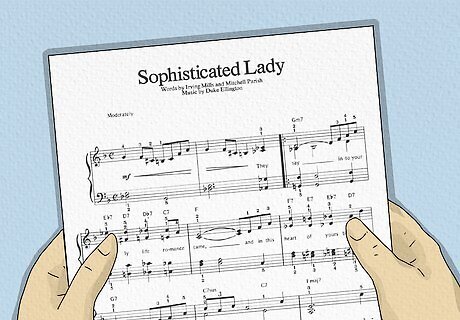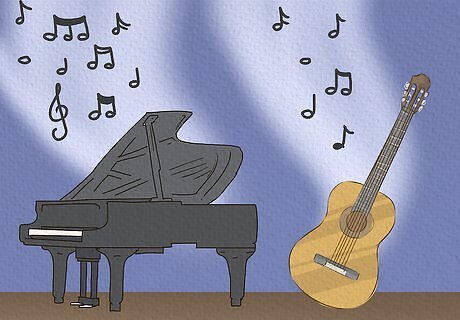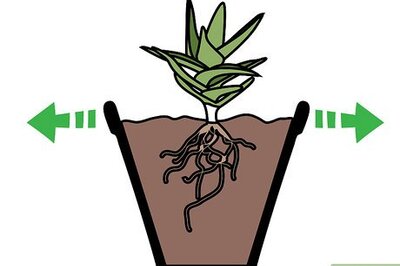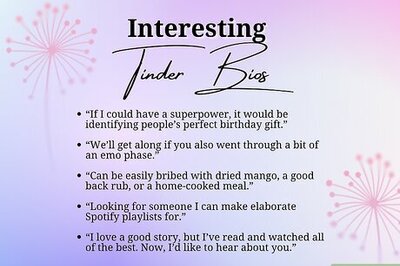
views
Understanding Lyrics

Look up the lyrics and follow along. The first step to understanding the meaning of lyrics is actually understanding them. Reading along will give you a much more complete picture of the words and eliminate misunderstandings. If you're trying to really dive into a song, you'll need the lyrics on hand to make sense of it. What does the title mean? What do you think the song is about? More often than not, reading the lyrics will give you guidance. Adele's hit "Hello" is about heartbreak and sadness. But the title points to something more: the desire and need to reach out to our fellow human beings. Look up any words or references that don't make sense. This is often the key to making a strange song suddenly clear. Charles Mingus's "Fables of Faubus," for example, only makes sense if you know that Orval Faubus was a racist Arkansas governor.

Ask yourself how the lyrics interact with the music. You cannot understand the lyrics fully if you don't listen to them against the music. Instrumentals are how mood is set and how songwriters tell their stories, and cannot be forgotten. Luckily, it is almost all subjective. Ask yourself -- what kind of music would you put behind these words? Why would an artist choose the music they did for background? Beyonce's "Love on Top" features a series of key changes that bring her voice higher and higher. The obvious, but important, parallel is that the love she feels is elevating her into the sky. The Smiths are famous for using bouncy, happy instruments under dark, melancholic lyrics. Perhaps this suggests that there is sadness under the surface of even the happiest people, or maybe the juxtaposition signifies the irony at the heart of life. Check out covers of your favorite songs to see how different artists approach the same words. Popular songs like "A Change is Gonna Come" can have wildly different "meanings" depending on the music behind the lyrics.

Listen for places the vocalist puts emphasis to find crucial lines. The words themselves are important, but the way they are delivered is just as crucial. Where does the singer change up the melody, hit a high note, growl out the words, or put a subtle pause? When you listen to the song, which phrases naturally stick in your brain? These are often the lines that hold the most clues about the songs importance. Even a howl or grunt can give lyrics new meaning, like Marvin Gaye's "Inner City Blues (Make Me Wanna Holler)." When he hits that high note you feel every word of pain in the song in a new light. Leonard Cohen puts all of "Chelsea Hotel No.2" into perspective with a quick, surprising internal rhyme. The song sounds like a love song, up until "I never suggest that I love you the best" shows that it is actually about fleeting memory. Think of the singer has a character, not the specific person. Tom Waits, for example, inhabits all sorts of druggies, gamblers, drivers, and con-men. When you realize he is playing characters, all with unique stories, he makes much more sense.

Search online for outside context about the track. Many songs are personal, hiding or hinting at other events without explaining them. Knowing this context can suddenly make the lyrics all snap into place. If you love a song or album, take some time to research how it came about to see if there is anything you never knew. Eric Clapton's "Tears in Heaven," for example, is a poignant song. But it becomes devastating when you learn it is about his son who died young. Kanye West's album "My Beautiful Dark Twisted Fantasy" is already powerful, but the knowledge that it was written in the wake of his mother's death gives it added depth.

Note where the song "turns" or changes on a dime. This is a technique of many advanced songwriters, and knowing it can help you understand even odd or oblique lyrics. A turn is when the lyrics suddenly shift directions, and this shift is often where people get confused. Realize, however, that this shift is often the point of the song -- to show you how things change or feel misplaced. When reading these lyrics, it is most important to ask two questions: "how is the end of the song different from the beginning, and how did we get there? Bob Dylan's "A Simple Twist of Fate," is in the third person for every verse until the last one. Suddenly, he switches to the first person and starts with "I." A impressionistic, cute little song becomes extremely personal, and it is clear Dylan was actually hiding his own sadness in someone else's story. Common's "Testify" is a mob ballad with a twist at the end -- the grieving wife is actually the mastermind. Suddenly, the refrain "please let me testify" sounds much more sinister.

Check out discussions or writing on music to gain a greater appreciation. Enter into the conversation by searching what other people think of the lyrics. Sites like RapGenius (which is not exclusively for rap) offer annotated lyrics, giving you a chance to see references or interpretations that you might have missed. Joining into conversation with others is the best way to quickly increase your understanding and open your mind to new interpretations.

Trust your own interpretation of the lyrics. Once a work of art is created you have just as much of a right to "understand it" as anyone else. Your own thoughts and opinions matter because no one can say what a song means to you. While there are certainly some interpretations that fit closer to the songwriter's intent than others, you should feel free to think about your personal interpretation.
Appreciating Instrumentals

Listen to the song several times and create your own impression and mood. Instrumental genres like jazz and classical are daunting to novices. It is easy to feel lost without words to give you guidance. But the biggest mistake most people make is that they forget their own feelings when listening to instrumentals. Do you like the song, or get bored? How does it grow and change from beginning to end? If you're still struggling, close your eyes. What do you see? If this song was in a movie, what kind of scene would it be scored to? Visualization is a great tool for understanding, especially without lyrics. You could also delve deeper into basic structures in the classical genre, such as sonata, rondo, and binary to gain clear markers that you can refer to as you listen.

Pay close attention to the title. The title is your first opening into understanding. It should give you a quick clue to the mood of the song, as well as any image or idea to associate with it. For example: Duke Ellington is a great introduction to jazz because his titles so perfectly match the mood of the song. "Sophisticated Lady," "In a Sentimental Mood," "Take the A-Train," and more all capture a specific image, idea, or event with clarity and beauty. Beethoven's "Moonlight Sonata" is dark, eerie, and gorgeous. In short, it would fit perfectly under a quiet, moonlit night. George Winston's repetitive, quiet keystrokes on "Snow" gain a depth and softness when you realize they refer to the flurries out his window.

Listen to each instrument individually to gain an appreciation for the whole work. Instrumental music tells its stories through a variety of instruments. Each piece needs to work together, while still staying distinct, to tell its story. Try and track each main instrument throughout the song-- you'll be surprised how much nuance and detail you pick up. Again, trust Duke Ellington to provide an accessible, swinging entry-point. Listen to how multiple instruments layer up to balance each other out and create complex melody lines. His famous suite "Diminuendo in Blue" is a good start. Mentally break up orchestras into sections. What are the strings (violins, cello, etc.) doing at one point? How are they balanced by the horns? When does percussion jump in to provided emphasis? Think in terms of groups, all working together to serve the needs of the piece.

Ask yourself how the song moves from beginning to end. Does the volume rise and fall? Does the mood go from happy and light to dark and somber? Does the song end in a similar place to where it began (aka rounded form), or does it end in a way that is completely different? The best music has movement. That means it takes you on a ride of some sort, holding your interest because you're not sure what comes next.

Understand and accept dissonance, which are chords that are harsh to the ear." When music sounds a little weird, off-the-wall, or grating, it is usually not because the musicians made a mistake. It is because they are trying to point out a complex, often negative emotion. Think of it like a gruesome or tragic scene in a movie -- not everything is a happy or easily portrayed idea. Ask yourself why dissonance helps tell the story of the song, and why a musician would intentionally play "bad" sounding music. With great musicians, there is always a reason. Max Roach's Freedom Now Suite is very difficult to listen to at times, full of harsh noises and jarring changes. But the Civil Rights Movement was anything but smooth and easy. Miles Davis's complex album Bitches Brew is the first major collision of rock and jazz, mashed up with African rhythms and influences. Music could no longer just be "one genre," and Davis is committed to exploring that idea, even when it gets weird. Doc Woods classical suite Symphonically Speaking contains the suite "Biota," whose messy, weird intro points to messy, weird origins of biology.

Dive deeper into the specific genre to look for references. A lot of instrumental music gains power when compared to the songs that came before it. This is not to say the song doesn't hold up on its own. Rather, you can get a deeper understanding by listening to the influences and growth of the music. Jazz, for example, seems intimidatingly complex these days. But it is built on a very accessible body of work -- music that has grown and evolved at pace with American society. If you're looking to start getting into a type of music, check out the earlier works first -- they are usually more accessible. New jazz fans can find no better starting points than Louis Armstrong and Duke Ellington. They laid the foundation for many of the artists after them. Classical fans should, in general, try and see something live. There is no better entry point than the rush and connection with live musicians in concert. Those getting into prog rock and instrumental rock might check out pioneers like Rush and Pink Floyd before moving on to complex modern bands This is true of almost all music, lyric or instrumental. The Beatles began with simple rock and R&B songs. It is only later that their complex, worldly music grew out of them.

Learn an instrument or music theory to further your understanding. If you simply want to talk and listen intelligently about music, you can trust your ear, mind, and feelings. But if you want to take it a step further you should move past listening and into creating. This doesn't mean you must become a maestro. Understanding the process of making music, however, will inevitably deepen your understanding of the music itself.




















Comments
0 comment